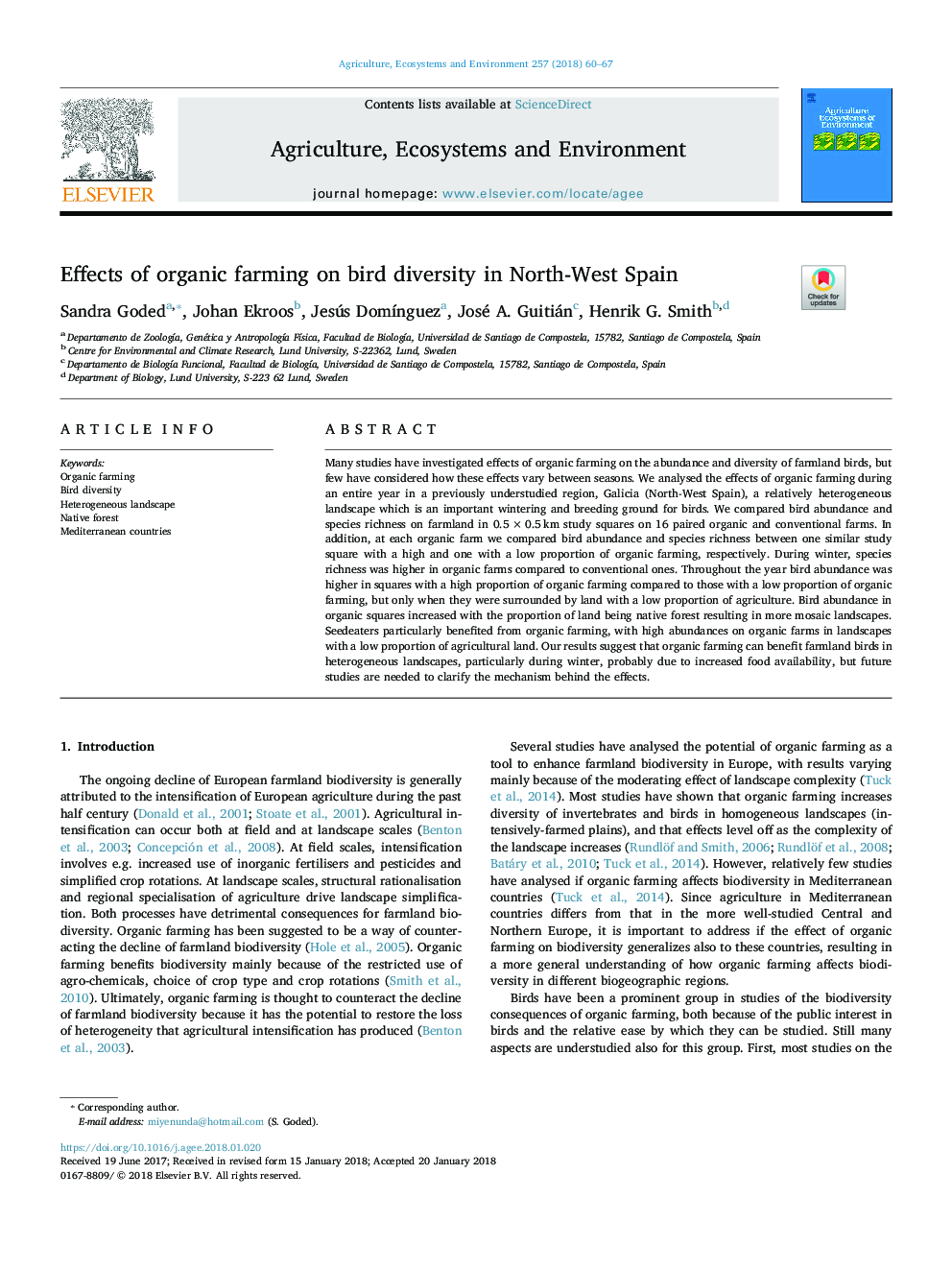| Article ID | Journal | Published Year | Pages | File Type |
|---|---|---|---|---|
| 8487138 | Agriculture, Ecosystems & Environment | 2018 | 8 Pages |
Abstract
Many studies have investigated effects of organic farming on the abundance and diversity of farmland birds, but few have considered how these effects vary between seasons. We analysed the effects of organic farming during an entire year in a previously understudied region, Galicia (North-West Spain), a relatively heterogeneous landscape which is an important wintering and breeding ground for birds. We compared bird abundance and species richness on farmland in 0.5â¯Ãâ¯0.5â¯km study squares on 16 paired organic and conventional farms. In addition, at each organic farm we compared bird abundance and species richness between one similar study square with a high and one with a low proportion of organic farming, respectively. During winter, species richness was higher in organic farms compared to conventional ones. Throughout the year bird abundance was higher in squares with a high proportion of organic farming compared to those with a low proportion of organic farming, but only when they were surrounded by land with a low proportion of agriculture. Bird abundance in organic squares increased with the proportion of land being native forest resulting in more mosaic landscapes. Seedeaters particularly benefited from organic farming, with high abundances on organic farms in landscapes with a low proportion of agricultural land. Our results suggest that organic farming can benefit farmland birds in heterogeneous landscapes, particularly during winter, probably due to increased food availability, but future studies are needed to clarify the mechanism behind the effects.
Related Topics
Life Sciences
Agricultural and Biological Sciences
Agronomy and Crop Science
Authors
Sandra Goded, Johan Ekroos, Jesús DomÃnguez, José A. Guitián, Henrik G. Smith,
